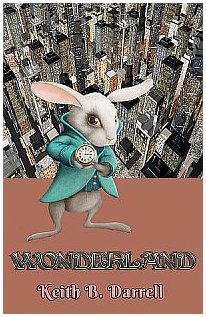As 2016 draws to a close, I think it fitting we reflect on the enormous
loss of talented individuals the Grim Reaper has seen fit to take from us. The
year began with the death of Arkansas Gov. (1971–75) and Sen. (1975–99)
Dale Bumpers, 90, on January 1. Six days later, character actors Douglas Greer,
94 (Our Gang) and Pat Harrington, Jr., 86 (the building superintendent “Schneider” on One Day at a Time)
died. But the first major death of the year came on January 10 with loss of
iconic androgynous glitter rock pop star David Bowie, 69, the English
singer-songwriter, musician, and actor (The Man Who Fell to Earth). His
death was followed by those of British actor Alan Rickman, 69 (“Severus Snape”
in the Harry Potter films and “Hans Gruber” in Die Hard)
on January 14; American songwriter, musician (The Eagles) and actor (Jerry
Maguire) Glenn Frey, 67, on January 18; American actor Abe Vigoda, 94 (The
Godfather, Lt. Fish on Barney Miller) on January 26; and on January
28, American musician (Jefferson Airplane, Jefferson Starship) Paul Kantner, 74, and American actor Mike
Minor, 75 (“Steve Eliot” on Petticoat Junction).
Only two days into February, American comedian (Bob and Ray) and actor (Get a Life)
Bob Elliott, 92, died. The next day, Maurice White, 74, musician-songwriter and
founding member of Earth, Wind & Fire died. On February 13, the political
world was rocked by the death of U.S. Supreme Court Justice Antonin Scalia, 79.
Three days later, the world mourned the death of Boutros Boutros-Ghali, 93, an Egyptian
politician and diplomat turned Secretary-General of the United Nations
(1992–96). On February 19, fans of the television series Dark Shadows
mourned the death of actor Humbert Allen Astredo, 86 (“Nicholas Blair”) as the
literary world lost To Kill a Mockingbird author Harper Lee, 89. The
final day of February saw the death of Oscar-winning American actor George
Kennedy, 91.
But 2016 was only getting started. March was a particularly fatal month,
beginning on March 6 with the death of American First Lady and former actress Nancy Reagan, 94. Emerson, Lake & Palmer
keyboardist Keith Emerson, 71, died on March 10, and the music industry lost
another talented singer and actor, Frank Sinatra, Jr., 72, on March 16. That
same day, Saudi royal Prince Bandar bin Saud bin Abdulaziz Al Saud, 90, died. Rob
Ford, 46, the controversial mayor of Toronto, Canada (2010–2014) died on March
22. Joe Garagiola Sr., 90, American baseball player (St. Louis Cardinals, Chicago
Cubs, and New York Giants), Hall of Fame sportscaster, and World Series
champion (1946) died on March 23, as did American actor Ken Howard, 71 (The
White Shadow). The next day, American television writer and producer (Falcon
Crest, The Waltons, and The Twilight Zone) Earl Hamner, Jr., 92 and
American comedian, actor, and writer Garry Shandling, 66, died. The month ended
with the death of Patty Duke, 69, an American actress (The Miracle Worker,
The Patty Duke Show, and Valley of the Dolls), Oscar winner (1962), and
Screen Actors Guild (SAG) president (1985–88), on March 29.
If March came in like a deadly lion, then April was more of a lamb with far fewer notable deaths. American singer-songwriter Merle Haggard, 79, died on April 6 but the death that shocked music fans the world over was that of rock star Prince, 57, an American musician, songwriter, and composer (“Purple Rain” and “Little Red Corvette”), Oscar-winning actor (1984) and four-time Grammy winner (1984, 1986, 2004, 2007). The music industry was still reeling from Prince’s death when singer Billy Paul, 81 (who won a Grammy for “Me and Mrs. Jones”) died on April 24.
Only months after her death, Patty Duke’s co-star, renowned character actor William Schallert, 93 (The Patty Duke Show, The Many Loves of Dobie Gillis, and In the Heat of the Night) and SAG President (1979–81) died on May 7. Canadian comic book artist (“Catwoman”, “DC: The New Frontier”) Darwyn Cooke, 53, died on May 14. Five days later, Canadian-born American journalist Morley Safer, 84 (60 Minutes) and actor Alan Young, 96 (“Wilbur” on Mister Ed) died. Cartoonists Mell Lazarus, 89 (“Miss Peach”, “Momma”) died on May 24. And as I’ve written about earlier in this blog, on May 28, Harambe, a 17-year-old American-bred Western lowland gorilla was shot to death at the Cincinnati Zoo.
June 3 brought the death of boxing icon Muhammad Ali, 74, an Olympic gold medalist (1960) and three-time WBC world heavyweight champion (1964, 1974, 1978). American songwriter (“(Hey, Won't You Play) Another Somebody Done Somebody Wrong Song”) and Grammy winner (1976) Chips Moman, 79, died on June 13. Soviet-born American actor (Star Trek 2009) Anton Yelchin, 27, died on June 19. American writer and futurist Alvin Toffler, 87 (Future Shock, and The Third Wave) died on June 27.
On July 2, Holocaust survivor Elie Wiesel, 87, a Romanian-born American writer (Night), political activist, and Nobel Laureate (1986) died. The next day, American actress Noel Neill, 95, (“Lois Lane” on The Adventures of Superman) died. Two days later, Belgian cartoonist Nine Culliford, 86 (“The Smurfs”) died. On July 19, the entertainment industry lost both Garry Marshall, 81, an American director, producer, writer, and actor (Happy Days, Pretty Woman, and Murphy Brown) and Jack Davis, 91, American cartoonist and illustrator (“Tales from the Crypt” and “The Vault of Horror”) who co-founded Mad magazine. The month closed with the death of American actor Jerry Doyle, 60 (Babylon 5) on July 27.
August saw the deaths of four distinctive actors: Kenny Baker, 81, (“R2-D2” in Star Wars; Time Bandits; and Flash Gordon) on August 13; Fyvush Finkel, 93 (Picket Fences, Boston Public, and A Serious Man), and Emmy winner (1994) on August 14; Jack Riley, 80 (The Bob Newhart Show, Rugrats, and Spaceballs) on August 19; and Gene Wilder, 83 (The Producers, Willy Wonka & the Chocolate Factory, and Young Frankenstein) – who was also a screenwriter and author – on August 29.
On September 5, actor Hugh O'Brian, 91, and American conservative activist and author Phyllis Schlafly, 92, died. Edward Albee, 88, an American playwright (Who's Afraid of Virginia Woolf?), Tony award (1963, 2002) and Pulitzer Prize award (1967, 1975, 1994) winner died on September 16. American Hall of Fame professional golfer Arnold Palmer, 87, died on September 25. On September 28, American television soap operas lost one of its most prolific writers and producers, Agnes Nixon, 93 (One Life to Live, All My Children, and The Guiding Light), while Israel lost Polish-born Nobel Laureate (1994) Shimon Peres, 93, who had served as the nation’s president (2007–14) and prime minister (1977, 1984–86, 1995–96).
October began with the death of American comic book writer (“Baker Street”) Gary Reed, 60 on the second day of the month. Later, on October 20, Michael Massee, 64, the actor who fired the gun on the set of The Crow that accidentally killed Brandon Lee in 1993, died. British comic book artist (“Preacher” and “Judge Dredd”) Steve Dillon, 54, died on October 22. His death was followed a day later by that of Tom Hayden, 76, an American writer, politician, peace activist (the Chicago Seven) once married to actress Jane Fonda, and California State Senator. The next day, American pop singer (“Take Good Care of My Baby” and “The Night Has a Thousand Eyes”) Bobby Vee, 73, died. The month closed with the death of actor Don Marshall, 80 (“Dan Erickson” on Land of the Giants) on October 30.
The death toll mounted in November. U.S. Attorney General (1993–2001) Janet Reno, 78 died on November 9. On November 13, actor Robert Vaughn, 83 (The Man from U.N.C.L.E.) and Leon Russell, 74, an American pianist, guitarist, songwriter, and bandleader both died. The next day, American Peabody Award-winning journalist, television newscaster, and author Gwen Ifill, 61, died. A co-host of PBS NewsHour and moderator of Washington Week, Ifill co-moderated a Democratic primary presidential debate between Hillary Clinton and Bernie Sanders in 2016. Wisconsin Congressman and U.S. Secretary of Defense (1969–73) Melvin Laird, 94, who oversaw the drawdown of American forces in Vietnam, died on November 16. On November 23, German-born British actor Andrew Sachs, 86, (“Manuel, the waiter from Barcelona” on the BBC sitcom Fawlty Towers) died on November 23, as did Jerry Tucker, 91, an American child actor (Our Gang). Actress and singer Florence Henderson, 82, (“Carol” on The Brady Bunch) died the next day. On November 25, Cuban Prime Minister (1959–76) and President (1976–2008) Fidel Castro, 90, died. On that same day, British photographer David Hamilton, 83, and American actor Ron Glass, 71, (Barney Miller and Firefly) died. American actor Van Williams, 82 (The Green Hornet) died on November 28, as did American television executive Grant Tinker, 90, who was Chairman and CEO of NBC (1981–86) and married to Mary Tyler Moore (1962-81). November ended with the death of American actress Alice Drummond, 88, on the last day of the month.
December could not come soon enough. The Grim Reaper’s deadly scythe had cut down politicians, jurists, world leaders, journalists, artists, writers, actors, musicians, sportsmen, royalty, and even a gorilla. But there were more to fall before its deadly blade. On December 7, Greg Lake, 69, of the band Emerson, Lake & Palmer died. The next day, U.S. astronaut and (Ohio, 1974–99) Sen. John Glenn, 95 – the first American to orbit the Earth – died. On December 13, Alan Thicke, 69, a songwriter, game and talk show host, and Canadian actor (“Jason Seaver” on Growing Pains) died. Two days later, the mustachioed actor Bernard Fox, 89 (“Dr. Bombay” on Bewitched and “Col. Crittendon” on Hogan's Heroes) died. On December 17, pollster Louis Harris, 95, and Dr. Henry Heimlich, 96, inventor of the Heimlich maneuver, died. December 18 brought the death of Hungarian-born American actress and socialite Zsa Zsa Gabor, 99. The next day, Andrei Karlov, 62, the Russian ambassador to Turkey was assassinated on television. With Christmas Eve came the death of Richard Adams, 96, author of the children’s classic Watership Down. On Christmas day, George Michael, 53, a British singer and former member of the duo Wham! died. Surely the Grim Reaper had had his fill? Yet less than two weeks from the premiere of Rogue One, the latest Star Wars film, Carrie Fisher, 60 (“ Princess Leia” in Star Wars) – an actress, author, advocate, and daughter of Eddie Fisher and Debbie Reynolds – suffered a stroke on an airplane and died days later on December 27. Her mother, Debbie Reynolds, 84, – an actress, singer, businesswoman, film historian, and humanitarian – died the following day. On the last day of 2016, actor William Christopher, 84 ("Father Mulcahy" in M*A*S*H) died.
These were only some of the more notable deaths in 2016. There were hundreds more, including that of Canadian singer, songwriter, musician, poet, novelist, and painter Leonard Cohen, 82, who died on November 7. Far too many to list here. I call these notable deaths because these individuals through their life’s work touched millions around the world, including myself. Even though few of us ever met them, we were moved by their talent, their efforts, and the contributions they left behind and therefore impacted by their deaths. I was personally acquainted with several individuals on this list so in those cases I feel the impact even more profoundly. But these were not the only deaths in 2016. Millions of individuals died this year, most unknown to all but a small number of people, but to those they left behind their deaths were certainly notable.
As lengthy as this post is, it is composed of only brief mentions of those decedents who left behind a lifetime of accomplishments we should acknowledge with their passing, before moving on to 2017. No matter how long you may live, life is always too short. Make the most of it and consider your legacy – what you will leave behind for others to remember you by.
R.I.P. Zsa Zsa Gabor, Noel Neill, Gary Reed










